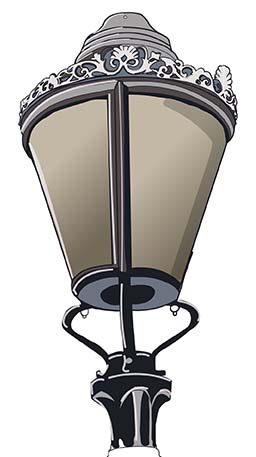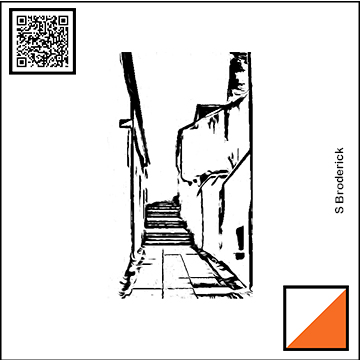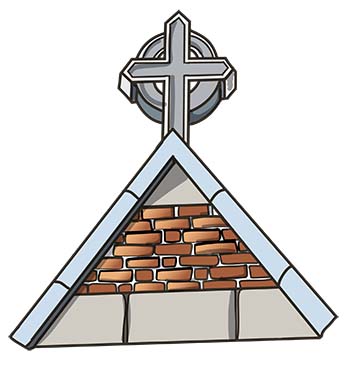Checkpoint 10 French’s Quay
Checkpoint 10 French’s Quay
Illustration of architectural feature close to the tile:


| This illustration marks our tenth checkpoint and was drawn by local artist - Sheelagh Broderick. It is a depiction of Keyser's Hill, located close by. |
You have now arrived at Checkpoint 10 French’s Quay.
Congratulations on arriving at Stop 10! You are now on French’s Quay, named after the wine merchant and Mayor of Cork James French who lived here in the 17th and 18th centuries.
A Hidden Bridge
It is not immediately obvious when you stand at this spot, but you are right beside an 18th-century bridge. Take a look back to see its single-arch when you walk further down the river. It was built around 1750 and has been in use ever since.
A Working River
Cork’s industrial heritage is tied to the city’s location on the water, and the river here was once alive with traffic. At the other end of the bridge, you are on is one of the few remaining slipways in Cork, and the only example of its type on the Lee’s south channel. Constructed with limestone kerbstones around 1870, it once provided direct access to the water for the area’s industries.
Looking Around: Two of Cork’s Great Buildings
Looking to the west you will see two of Cork’s most prominent landmarks towering above—Elizabeth Fort, which has been looking down on the city since 1602, and St Fin Barre’s Cathedral, which was built between 1865 and 1876 on a site that has been a religious centre since Early Medieval times. Why not consider a visit to explore them!
A Grand Entrance
The next bridge visible to the east is South Gate Bridge, which provides access into South Main Street. A bridge has stood here since medieval times, and prisoners were once held in a gaol that once loomed over it. The triple-span limestone bridge you see today was built in 1713 and widened in 1824—see can you spot the additions when you look under the bridge. It was designed with three arches to reduce the pitch of the bridge and give it an easier gradient, and this is one of the two oldest examples of its type left in Ireland.
Feature Focus: Cutwaters
As you pass, look out for the distinctive pointed stone features at the base of the bridge. Known as cutwaters, they are designed to protect the structure by deflecting some of the water’s force.
|
Clue: Make your way to the school founded in 1771 by one of Cork’s most famous women. |




